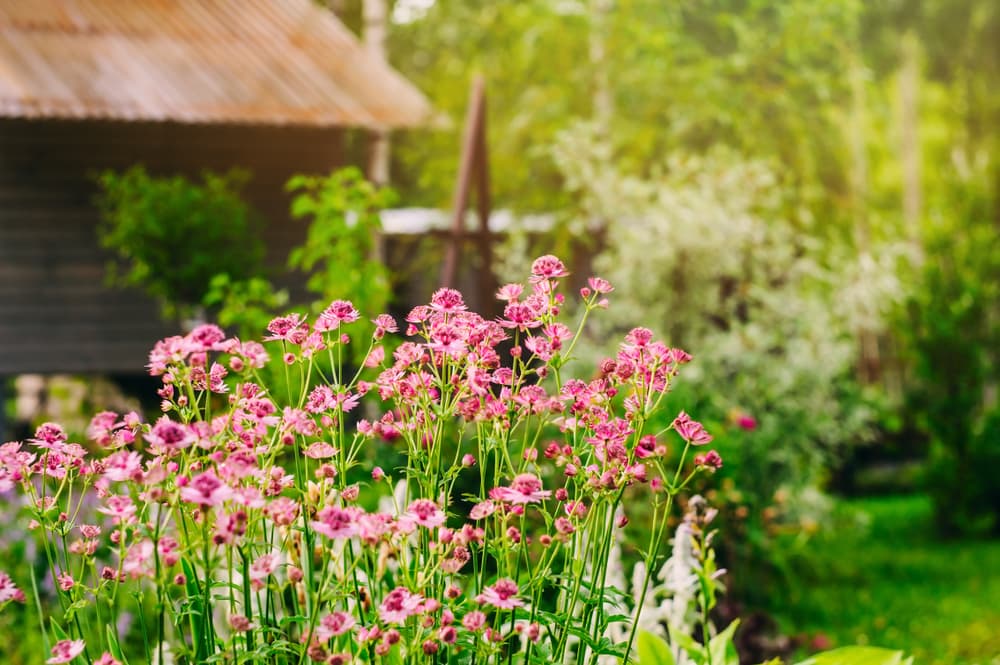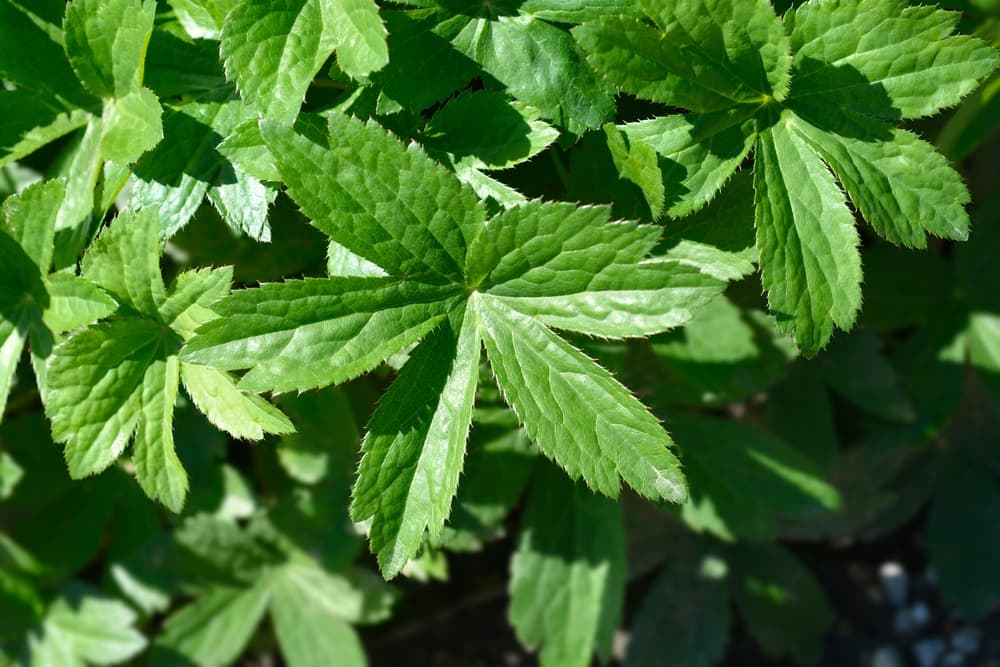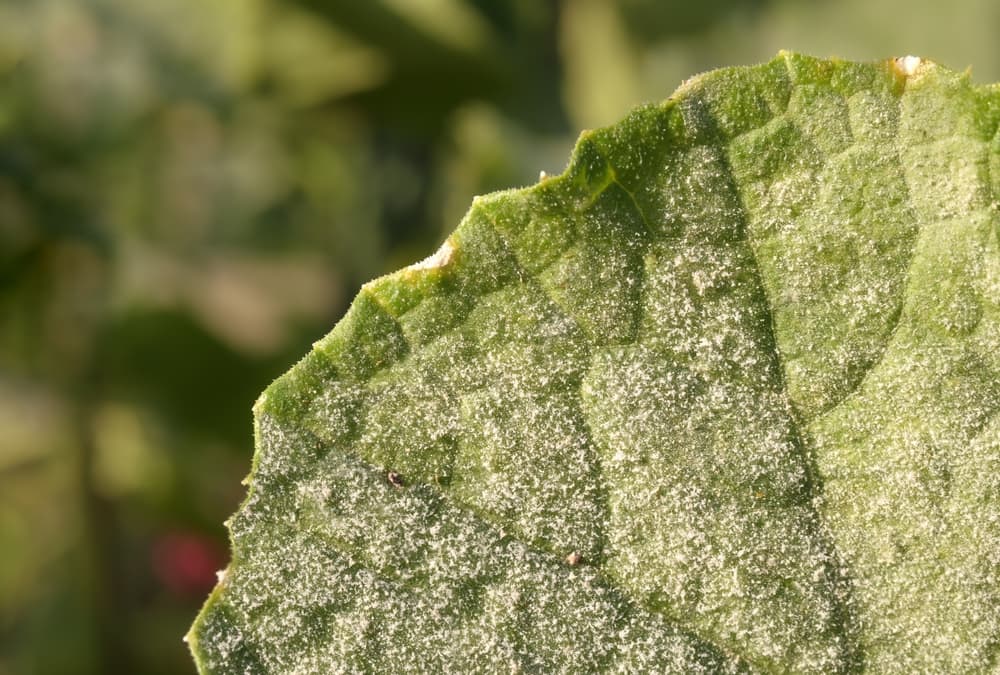PERENNIALS > ASTRANTIA

Elizabeth is a Permaculture Garden Designer, Sustainability Consultant and Professional Writer, working as an advocate for positive change. She graduated from the University of St. Andrews with an MA in English and Philosophy and obtained a Diploma in Applied Permaculture Design from the Permaculture Association.
Reviewed By ROY NICOL

Roy is a Professional Gardener and Horticultural Consultant, specialising in large garden year-round maintenance and garden development. He is an RHS Master of Horticulture and uses his research in the application of no-dig methods in ornamental garden settings. Roy has been a Professional Gardener for more than six years and is a member of the Chartered Institute of Horticulture, Professional Gardener's Guild and Association of Professional Landscapers (Professional Gardener).
Contributions From CAROLINE SAMUEL

Caroline Samuel is the owner of specialist plant nursery Letham Plants. Caroline studied Horticulture at Oatridge College and during this time began growing a range of perennials that she then exhibited at major flower shows. For the last 10 years, she has specialised in Astrantia both as a garden plant and as a cut flower - culminating in a Silver Gilt Award at RHS Chelsea in 2022 for her specialist range of Astrantias.

Andrea Jones is an award-winning Photographer who has travelled around the world photographing plants, wildlife and gardens for a range of publications and solo exhibitions. She also has published her own book, The Garden Source, to help gardeners design their own spaces.

Claire Greenslade, a horticulturist with a background in textile design, works as the Head Gardener at Hestercombe. Her career, which spans various roles including a stint in the National Trust Careership and managing educational gardens at Ryton Organic Garden, has seen her contribute significantly to the development and restoration projects at Hestercombe Gardens Trust.
IN THIS GUIDE
The interesting pincushion blooms of Astrantia make them a popular choice for summer colour in a garden.
There are a number of cultivars well worth considering – with blooms in an array of reds, pinks and whites.
In each of our Astrantia guides, we collaborate with Caroline Samuel, Owner of Letham Plants, a specialist Astrantia nursery.
“Astrantias are great border plants with lush green foliage and straight stems that are topped with star-shaped flowers,” Caroline says.
“The flowers are pincushion-like and are surrounded by papery bracts, giving a starry appearance.
“There are lots of varieties, in a range of colours from white to pink, to cherry red through to burgundy.
“They make excellent cut flowers and you might see them in summer wedding bouquets as well as in displays around the home.”
Overview
| Botanical Name | Astrantia |
| Common Name(s) | Masterwort, Hattie’s Pincushion |
| Plant Type | Herbaceous perennial |
| Native Area | Europe and Western Asia |
| Hardiness Rating | H7 |
| Foliage | Palmately lobed basal leaves |
| Flowers | Compact umbels of tiny flowers usually pinkish, reddish hues |
| When To Sow | February to April |
| Flowering Months | June to September |
| When To Prune | July to August |
Sunlight
Preferred
Part Shade / Full Sun
Exposure
Sheltered
Size
Height
0.1 – 0.5M
Spread
0.1 – 0.5M
Bloom Time
June – September
Soil
Preferred
Most soil types
Moisture
Moist and well-drained, poorly drained
pH
Any
Astrantia is a genus of herbaceous plants – the name of which refers to the open, star-shaped floral bracts that radiate out around the pincushion-like flowering heads.1Masterwort (Genus Astrantia). (n.d.). iNaturalist United Kingdom. Retrieved March 10, 2023, from https://uk.inaturalist.org/taxa/131624-Astrantia

One common name for this plant is ‘Hattie’s Pincushion’, while it is also referred to as ‘Masterwort’ and ‘Melancholy Gentleman’.
As mentioned above, there are plenty of cultivars within this genus to choose from, but here are some excellent options for gardeners in the UK to consider:
- A. ‘Star of Fire’ – deep red bracts tipped black, green leaves edged with pink and black.
- A. major ‘Bloody Mary’ – dark green leaves and rich, dark red flowers with silver-green centres.
- A. ‘Gill Richardson’ – vibrant cherry-red flowers from April-September.
- A. major var. Rosea – dark foliage and charming pinkish-white blooms.
- A. major ‘Alba’ – white flowers June-October.
Of course, these are just some of the options you could consider for your garden.
“A. major ‘Star of Fire’ is a favourite of mine,” Caroline shares.
“It is of medium size at around 60cm and has dark burgundy flower stems and dark red flowers tipped black.

“It looks great in the garden when planted with grasses and is an excellent cut flower.”
Another favourite of Caroline’s is ‘Snow Star’, which is a similar size to ‘Star of Fire’ but is instead completely white and makes an excellent addition to garden borders.

“Astrantia major ‘Pink Sensation’ is my final pick, and this variety has large pale pink flowers,” she adds.
“This flower is not for a small garden, as the leaves on it are huge as are the flowers.
“Like most Astrantias, this one is loved by the bees and butterflies.”
Why Grow Astrantia?
All of the varietals named above, along with a number of other beautiful options, are wonderful choices for a perennial planting scheme.
“Astrantia flowers look multi-dimensional to me in early summer and are always intriguing to photograph,” shares Andrea Jones, an award-winning garden photographer.
Aside from being prized for their attractive blooms, Astrantia is also a good choice for creating ground cover when the plants are grown in a group.
An effective ground cover can protect the soil and keep your soil ecosystem healthy and productive over time.

Astrantia is also well-known for self-seeding in the right conditions.
This can be great where gardeners are looking for a low-maintenance and wilder garden scheme.
However, you can also deadhead zealously if you want to discourage this.
Astrantia flowers can also make good cut flowers, so you could also remove the blooms before they set seed and use them for floral arrangements and displays inside your home.
These plants are typical plants for British gardens, having bloomed here since Tudor times.

They look at home in a cottage or English garden type design.
“Our asters are looking fabulous at the moment this autumn and take very little care,” shares Claire Greenslade, the Head Gardener at Hestercombe Gardens.
“We make sure that we have good staking in place by April or May and we use coppiced hazel from the estate to make our supports so they look nice and natural.”
One of the other reasons for their enduring popularity is that they are slug and snail-proof.
These plants can therefore be a good choice if these are an issue where you live.
Another major plus for gardeners growing Astrantia is the fact that these are excellent wildlife-friendly plants as their nectar-rich flowers attract pollinators such as bees and butterflies.
Growing some Astrantias can help in maintaining the natural biodiversity that is needed for a healthy organic garden.
Where To Grow
Astrantia grows best in moist, humus-rich soil.
A loamy soil that is high in organic matter is ideal, and sites with sandy soil will usually struggle to retain enough moisture.
Clay soils can also be suitable for growing these plants, as long as they remain moist and do not bake dry in hot weather.

Astrantias will commonly thrive in the dappled shade beneath trees in a woodland or forest garden.
Though it is worth noting that certain darker-hued varieties will perform better in a sunnier spot, so it is important to know the needs of the varietal or varietals you are considering.
Astrantias will also tend to do well under trees or shrubs or in glade areas between them, in a moist garden bed or border.

Astrantia lends itself well to planting in groups, where, as mentioned above, it will provide good ground cover between other plants.
Good companion plants for Astrantias include:
- Dryopteris
- Geums
- Salvias
- Thalictrums
- Sambucus nigra
Though it will work well with many other plants that prefer relatively moist conditions.
“I have found using Astrantia to underplant roses in a cottage garden scheme works well, as they cover the often bare lower part of rose shrubs and flower in between the main flushes of rose flowers in June and September,” shares Roy Nicol, a Professional Gardener and Horticulturist.
How To Grow Astrantia
From Seed
Astrantia seeds can be sown under cover in spring between February and April before being pricked out, potted on and planted out once the weather warms.
You can also sow seeds from your own Astrantia plants directly in August or September in trays or drills in the garden, before pricking out and planting into their final growing positions the following spring.
“`be aware that seeds from cultivars do not come true from seed and so the colours are likely to differ from the original,” adds Roy.

Bedding Plants
Bedding plants purchased for your garden can be planted out between October and April.
Simply remove the plant from its pot and position it in a planting hole.
Refill the hole around the plant, firm it, and water well.
Add a mulch of organic matter around your plants to retain soil moisture.
Astrantia Plant Care
Astrantia plants should be well-watered.
Adequate watering is particularly important to shepherd these plants through their first summer.
“Astrantia does not tolerate long spells of drought, especially on light soils which are free draining,” says Caroline.
“If your Astrantias wilt due to a lack of watering, extra water helps and the plants will recover with no ill effect.”

Note that plants grown in pots or containers will require more water than those grown in the ground.
Mulching
“A mulch of organic matter is useful in the autumn,” adds Caroline.
Autumn leaves or leaf mould, home-made compost and well-rotted manure can all be good mulch choices.
As long as the basic needs of moisture, soil and environmental conditions are met, Astrantia plants are relatively easy and low maintenance – requiring little care.
Common Problems
Usually trouble-free and, as mentioned above, untroubled by slugs and snails, Astrantias can be susceptible to fungal infections such as powdery mildews.
You can reduce the chances of a problem occurring by making sure that plants do not dry out and do not experience physiological stress.
Plants not in tip-top condition are more likely to be a target.
Mulching well will also help to reduce the incidence of problems, as it can prevent soil containing fungal spores from splashing back up onto the plant’s leaves.

When watering, try to water at the roots and not from above, so foliage is not left wet.
Make sure there is good airflow around plants and avoid overcrowding.
This can be achieved by dividing plants in the spring and re-planting them in more space.
You will be able to see if this problem has arisen by the white coating that appears on the leaves.
“Astrantias can also suffer from Astrantia leaf miner,” Caroline explains.
“The leaf miner causes brown patches on the leaves, usually early summer.
“This is caused by the larvae of the fly feeding within the foliage of the plants. Affected leaves can be removed, but whilst unsightly, it does not affect the flowers.”
Preventing Fungal Infections
To reduce the spread of such fungal infections in an organic garden, you should always remove affected foliage as quickly as possible.
Usually, other interventions will not be required.
However, you can also make a home-made fungicide to spray on surrounding leaves, which can also reduce the spread and help in tackling milder infections.
One example is a solution of 5% apple cider vinegar in 1 gallon of water sprayed on leaves in the cool morning hours.

You can also use solutions containing garlic, or bicarbonate of soda if fungal infections such as powdery mildew become a persistent problem.
In autumn, cut back affected plants and be careful as you dispose of or burn the foliage.
Do not add the material to your compost heap, and keep it away from other areas of the garden so the problem does not spread.
Grow them in the right places and consider the conditions they like best and you should find that Astrantias are superb, hassle-free flowering plants for your garden.
As perennials, they will come back each year to delight you, and the bees and other insect life in your area.
References
- 1Masterwort (Genus Astrantia). (n.d.). iNaturalist United Kingdom. Retrieved March 10, 2023, from https://uk.inaturalist.org/taxa/131624-Astrantia

